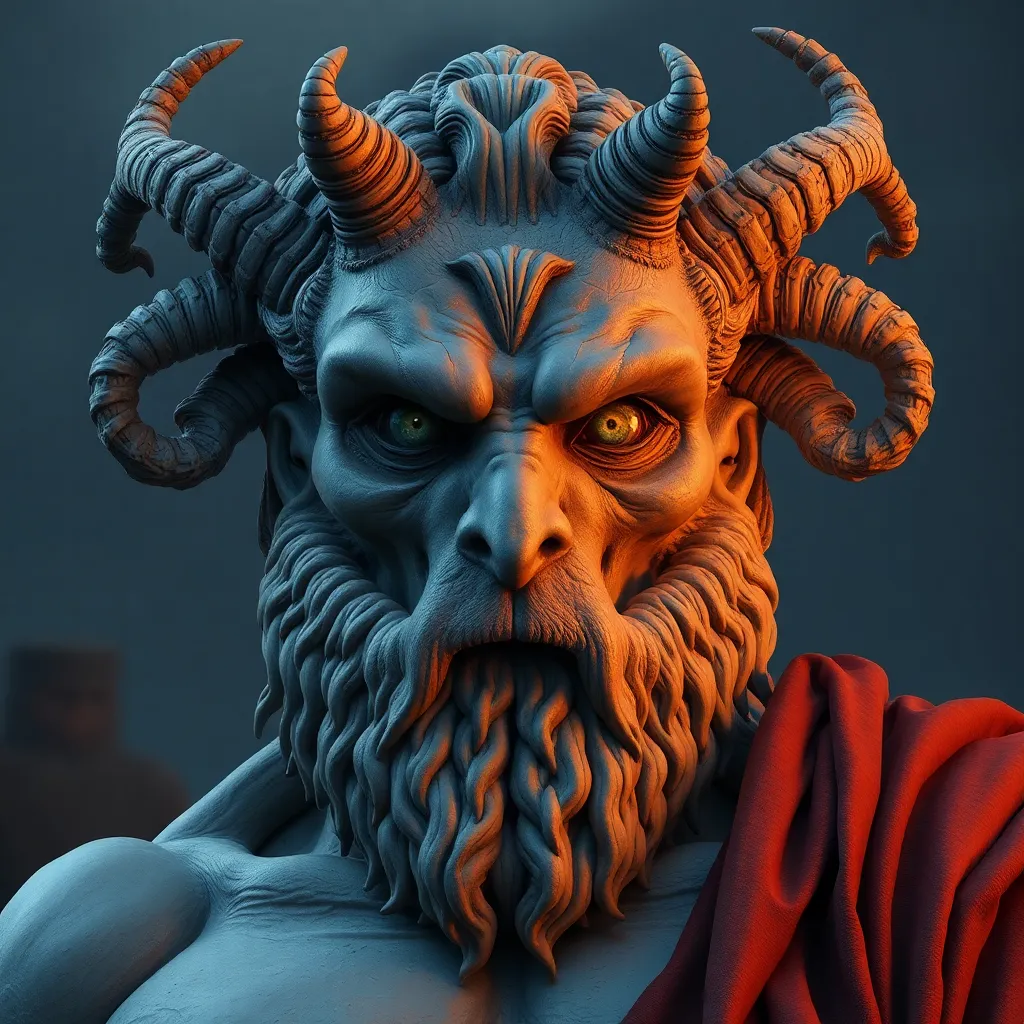The Cyclops and the Concept of Monstrosity in Myth
I. Introduction
Monstrosity in mythological contexts often refers to beings or entities that embody the fears, taboos, and moral dilemmas of society. These figures are not merely physical aberrations but are rich with symbolic meaning, representing the boundaries of human experience and understanding.
The Cyclops, a one-eyed giant from ancient Greek mythology, is one of the most iconic figures representing monstrosity. Often portrayed as brutish and savage, the Cyclops disrupts the order of civilization with their raw power and primal instincts. This article aims to explore the implications of Cyclopean myths, examining how they reflect human fears and societal values.
II. Historical Background of the Cyclops
The origins of the Cyclops in ancient Greek mythology can be traced back to the earliest works of literature, notably in Homer’s “The Odyssey.” The Cyclopes are depicted as a race of giant, one-eyed beings who live isolated from human civilization, often in caves or remote locations.
Over time, the evolution of the Cyclops myth has transcended Greek culture, finding parallels in various cultures around the world. For instance, similar one-eyed creatures appear in Celtic and Norse mythology, showcasing a shared archetype of monstrous beings.
Key literary works featuring the Cyclops include:
- The Odyssey by Homer
- Theogony by Hesiod
- Metamorphoses by Ovid
III. The Cyclops as a Symbol of Otherness
The Cyclops embodies characteristics that define ‘the Other’ in mythological narratives. Their monstrous appearance and savage nature contrast sharply with Greek heroic ideals, which often emphasize beauty, order, and reason.
This contrast highlights several implications of otherness:
- Fear of the unknown: The Cyclops represents what is outside the norms of civilization.
- Reflection of societal values: The monstrosity of the Cyclops serves as a warning against straying from accepted moral codes.
- Otherness as a narrative device: The Cyclops often acts as an obstacle to the hero’s journey, symbolizing challenges that must be overcome.
IV. The Role of the Cyclops in “The Odyssey”
In Homer’s “The Odyssey,” the encounter between Odysseus and Polyphemus, the most famous Cyclops, serves as a pivotal moment in the narrative. Polyphemus is depicted as both powerful and unintelligent, living a solitary life that reflects his barbaric nature.
The themes explored in this encounter include:
- Power: Polyphemus is physically formidable, representing brute strength.
- Intelligence: Odysseus uses cunning and wit to outsmart the Cyclops, showcasing the value of intelligence over raw power.
- Savagery: The Cyclops’s barbarism contrasts with Odysseus’s civilized behavior, emphasizing the conflict between civilization and savagery.
The consequences of this encounter are profound, resulting in Odysseus’s intelligence being celebrated, while Polyphemus’s actions lead to his downfall. This conflict between hero and monster highlights the complexities of power dynamics in mythology.
V. Monstrosity and Human Nature
The Cyclops serves as a reflection of human fears and desires. They embody the primal instincts that reside in humanity, representing both the potential for savagery and the need for order. Monsters in mythology often act as embodiments of societal values and moral lessons, revealing the duality of monstrosity.
The duality of monstrosity can be summarized as:
- Villain: The Cyclops is often seen as the antagonist, embodying chaos and danger.
- Victim: In some interpretations, the Cyclops can be viewed as a victim of circumstance, misunderstood and isolated from society.
VI. Cultural Interpretations of the Cyclops
The Cyclops myth has been interpreted and adapted in various cultures, leading to a rich tapestry of representations. In different mythologies, Cyclopean figures appear with varying attributes and roles.
Artistic representations of the Cyclops have also evolved over time, influencing how this figure is perceived in modern culture. Notable artistic interpretations include:
- Paintings from the Renaissance period depicting the encounter between Odysseus and Polyphemus.
- Modern sculptures that explore the themes of monstrosity and otherness.
In contemporary culture, the Cyclops has been reimagined in various forms, including films, literature, and video games, showcasing the enduring fascination with this mythological figure.
VII. The Legacy of the Cyclops in Contemporary Culture
The legacy of the Cyclops continues to resonate in literature, film, and popular media. Modern adaptations often explore themes of monstrosity, identity, and the human condition.
Some notable representations of the Cyclops in contemporary culture include:
- Films such as “Clash of the Titans” and “The Odyssey” adaptations.
- Literary works that reinterpret the Cyclops myth, often focusing on themes of alienation and identity.
- Video games featuring Cyclopean monsters, reflecting the ongoing fascination with mythological creatures.
The Cyclops myth serves as a lens through which we can explore the complexities of human nature and societal values in today’s world.
VIII. Conclusion
In conclusion, the Cyclops holds significant importance in both myth and culture. As a symbol of monstrosity, the Cyclops encapsulates the fears and values of society, serving as a reflection of humanity’s darkest instincts and greatest aspirations.
The ongoing relevance of monstrosity in understanding humanity can be seen through the Cyclops myth, which continues to inspire and provoke thought in contemporary discourse. As we navigate the complexities of modern life, the lessons learned from the Cyclops serve as a reminder of the duality of human nature, urging us to confront the monsters within and around us.




